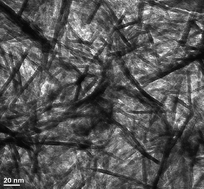Self-assembled calcium phosphate nanocomposites using block copolypeptide templates
- Author(s)
- Yanyan Hu , Y. Yusufoglu , M. Kanapathipillai , J. Yang , P. Thiyagarajan , T. Deming , M. Akinc , Klaus Schmidt-Rohr and S. K. Mallapragada
- Publisher
- Soft Matter
- Year
- 2009
- Volume
- 5
- Pages
- 4311-4320
- DOI
- 10.1039/B904440J
Abstract
Polylysine and polyleucine based block copolypeptides (K170L30) that form gels at very low concentrations in aqueous media are used as templates for forming self-assembled calcium phosphate nanocomposites. The synthesis method allows for simultaneous formation of the self-assembled block copolypeptide gel and of the inorganic phase, providing inorganic contents of over 50 wt% in the nanocomposite, approaching the inorganic content in bone. The self-assembled nanocomposites are characterized by thermogravimetric analysis, X-ray diffraction(XRD), Fourier transform infrared (FTIR) spectroscopy, solid state nuclear magnetic resonance (NMR), transmission electron microscopy (TEM) and small angle X-ray scattering (SAXS). The nanocomposites formed in the presence of the block copolypeptide templates exhibit very different nanoparticle morphologies than those formed in the absence of the organic phase. Multinuclear solid state NMR methods are used to prove nanocomposite formation and characterize the secondary structure and mobility of the block copolypeptide template. The data from XRD, FTIR, and 31P NMR consistently show that the inorganic phase present in the nanocomposite is carbonated hydroxyapatite of nano-scale dimensions, with an elongated plate-like morphology, observed by TEM and SAXS, similar to the mineral phase of natural bone. Overall, this approach allows a bioinspired bottom-up approach to self-assembled hydroxyapatitenanocomposites using block copolypeptide templates, which could have applications in tissue repair.
